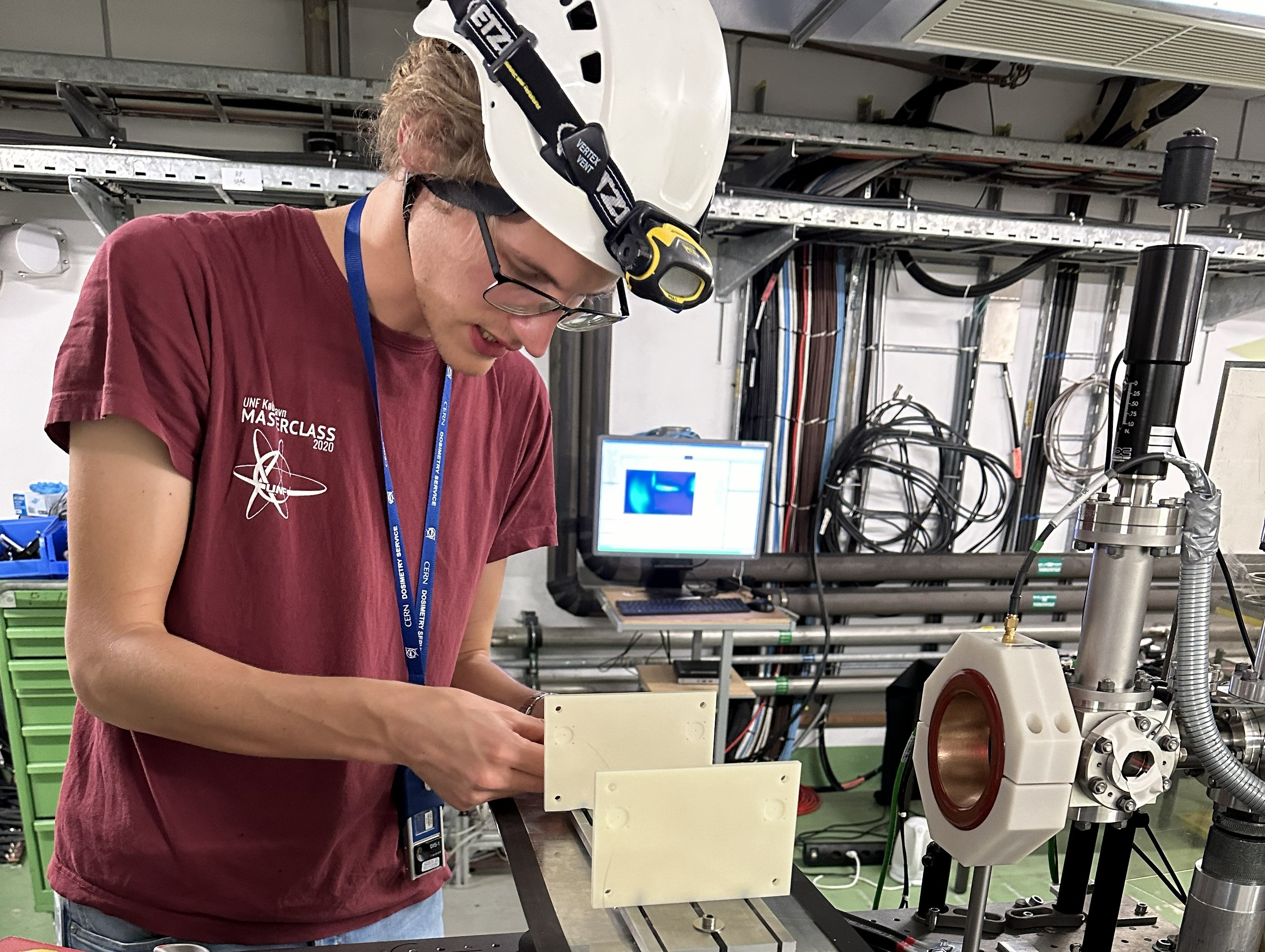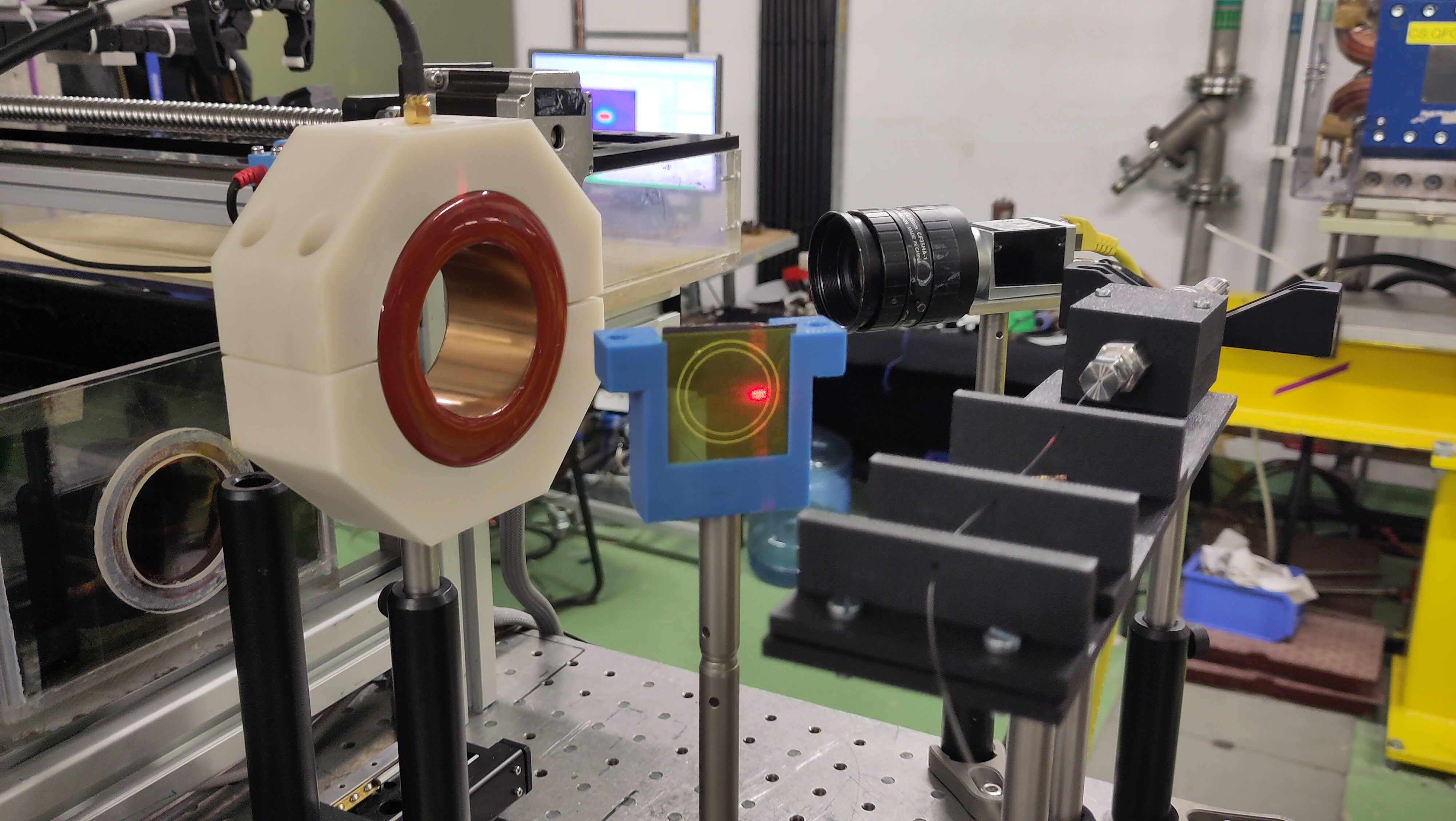

Novel beam sensors built to last
A slender glass fibre no thicker than a human hair placed across a particle beam could improve accelerator monitoring. A team is testing the use of hollow-core optical fibres to measure the profile and position of the beams extracted from the Super Proton Synchrotron, CERN’s second-largest accelerator, which feeds the experiments located in the North Area.
Unlike conventional fibres, which guide light through solid glass, hollow-core optical fibres are mostly empty inside but have a microstructure design that guides light through resonance–antiresonance effects on the electromagnetic field. By filling these fibres with a scintillating gas – a gas that emits tiny flashes of light when struck by particles – scientists can create a simple yet powerful radiation sensor that helps them to adjust the beam profile and position and may even allow them to measure the delivered beam dose in real time.Unlike the multi-wire proportional chambers and scintillator detectors currently used, these fibres can be used in an extreme radiation environment and are therefore very useful for CERN’s future accelerators and experiments.
Reliably measuring particle beams is crucial for both experimental physicists and beam physicists. The operation of all of CERN’s accelerators relies on a vast amount of data sent by thousands of beam sensors distributed along the machines. But their reliability may be compromised at high energies or high intensities. This is also a concern for scientists developing accelerators for medical applications, such as FLASH radiotherapy. The FLASH technique delivers radiation at ultra-high dose rates and shows great promise in cancer treatment, but its extreme beam conditions also require new kinds of monitoring tools to be developed.
A team focusing on beam diagnostics for CERN’s experiments, together with researchers working on medical applications, are exploring new tools that can withstand extreme radiation. By linking accelerator expertise with medical research, the technology being tested for CERN’s North Area could one day support the safe delivery of FLASH therapy to patients.
The collaboration put the concept to the test at CERN’s various test facilities and accelerators, such as CLEAR, in 2024 and 2025. They exposed a fibre filled with an argon–nitrogen mixture to an electron beam and connected it to a silicon photomultiplier, a sensor that can detect single photons. Each time the beam passed through, the gas lit up and the fibre carried that signal to the detector.

The results, which were presented at this year’s International Beam Instrumentation Conference, were striking. “The fibre’s measurements of the beam profile closely matched those from a traditional YAG screen, a crystal that glows when struck by particles”, explains Inaki Ortega Ruiz, who leads the beam instrumentation consolidation of the SPS North Experimental Area. “Even after receiving a radiation dose high enough to damage many instruments, the fibre showed no sign of performance loss.”
These first results are encouraging, but further work is planned to improve the connection between the fibre and the detector, test sealed fibres pre-filled with gas and study the fibres’ long-term radiation hardness.
cmenard
